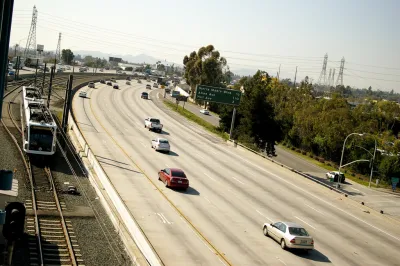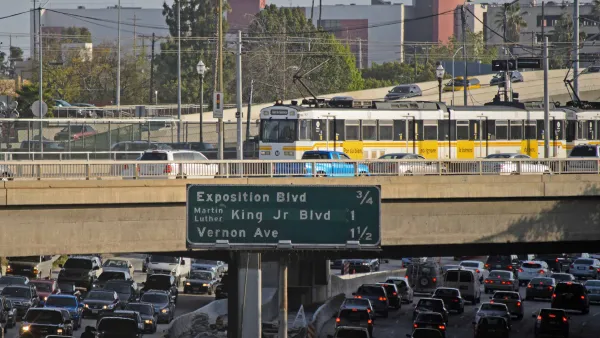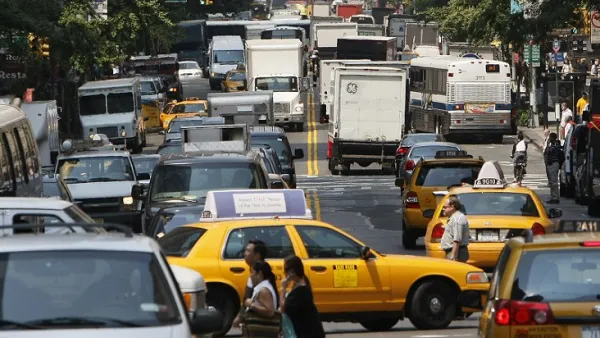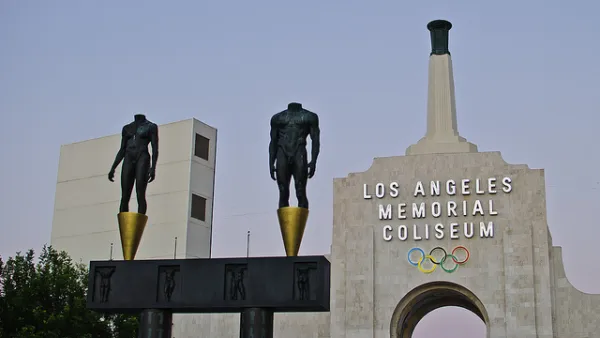The city of Los Angeles is looking for ways to close a $26.2 billion funding gap for its plan to complete 28 transportation projects by the 2028 Summer Olympics.

"Charging tolls on Los Angeles freeways during times of highest use and taxing Uber and Lyft rides are two new sources of revenue being considered by the Los Angeles County Metropolitan Transportation Authority," reports Steve Scauzillo.
The very preliminary proposal for congestion pricing "would charge for use of all lanes on freeways entering inner city core areas of Los Angeles, such as the 101, 5, 10 and 60 freeways during rush hours, while keeping the freeways free during off-peak hours."
Scauzillo also repeats some of Washington's arguments in support of the idea, like the precedent for congestion as a congestion reduction tool in cities like London, Stockholm, Singapore, and Milan.
A separate article by Elijah Chiland details some of the reactions of Los Angeles political leaders to the notion of congestion pricing. Chiland also previewed the report before the public presentation.
Congestion pricing would raise $1.2 billion a year. A tax on transportation network companies, also under discussion, would raise between $25 million to $350 million a year. That leaves the city still scrambling to cover the rest of the funding gap to build all of the projects on the "Twenty-eight by 28" list.
FULL STORY: L.A. Metro considering adding congestion pricing to jammed freeways

National Parks Layoffs Will Cause Communities to Lose Billions
Thousands of essential park workers were laid off this week, just before the busy spring break season.

Retro-silient?: America’s First “Eco-burb,” The Woodlands Turns 50
A master-planned community north of Houston offers lessons on green infrastructure and resilient design, but falls short of its founder’s lofty affordability and walkability goals.

Delivering for America Plan Will Downgrade Mail Service in at Least 49.5 Percent of Zip Codes
Republican and Democrat lawmakers criticize the plan for its disproportionate negative impact on rural communities.

Test News Post 1
This is a summary

Test News Headline 46
Test for the image on the front page.

Balancing Bombs and Butterflies: How the National Guard Protects a Rare Species
The National Guard at Fort Indiantown Gap uses GIS technology and land management strategies to balance military training with conservation efforts, ensuring the survival of the rare eastern regal fritillary butterfly.
Urban Design for Planners 1: Software Tools
This six-course series explores essential urban design concepts using open source software and equips planners with the tools they need to participate fully in the urban design process.
Planning for Universal Design
Learn the tools for implementing Universal Design in planning regulations.
EMC Planning Group, Inc.
Planetizen
Planetizen
Mpact (formerly Rail~Volution)
Great Falls Development Authority, Inc.
HUDs Office of Policy Development and Research
NYU Wagner Graduate School of Public Service





























